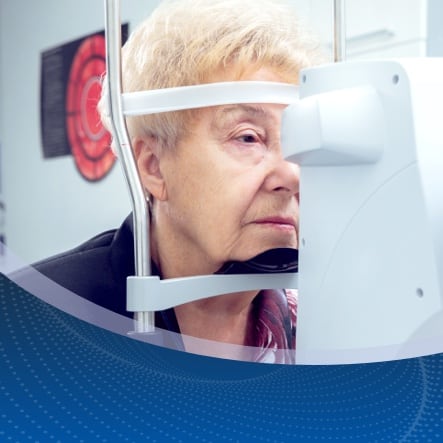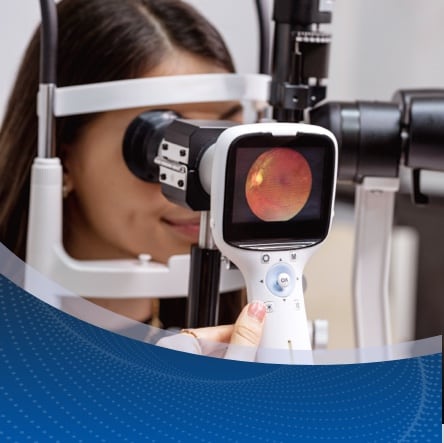Cataracts cloud the eye’s natural lens. Over time, this results in a decline in clarity. Left untreated, cataracts can lead to severe vision loss, including legal blindness. This progression, however, is a gradual one. Most age-related cataracts progress over a period of years, not weeks or months. When addressed properly, there’s room to track vision, adjust daily habits, and plan the right time for surgery.
Cataracts in Plain Terms
Under normal conditions, the lens of an eye is clear and focuses light on the retina. With cataracts, proteins begin to form on the lens, leading to clumps that scatter light. The result is hazy vision, with noticeable glare and reduced contrast. The initial stages of cataracts are often challenging to detect, though, as changes are relatively minor at first. Later stages create a blur that glasses cannot fix, trouble with headlights at night, and colors that look noticeably duller or “yellowed.”
Can Cataracts Cause Blindness
At advanced stages, cataracts can cause a significant loss of vision and ultimately lead to blindness. The risk rises as the lens becomes dense and light fails to reach the retina. Typically, this level of impairment develops slowly. Faster changes can occur after eye trauma, certain medications, or other eye diseases. Regular examinations can limit the chance of a cataract progressing to a stage where daily life or safety is at risk.
Stages of Cataract Progression
Most eyes move through recognizable stages. Early cataracts show minor lens changes with little to no effect on function. Immature cataracts cause more noticeable blur, glare, and frequent updates to glasses that provide less relief each time. Mature cataracts turn the lens uniformly cloudy and make driving, reading, and detailed work difficult. Hypermature cataracts can leak or swell, raise pressure, and increase the odds of inflammation, which is why long delays are unwise once vision drops.
What Happens if Cataracts Are Left Untreated
If cataracts are not treated, small changes accumulate and begin to impact daily life.
- Reading needs brighter light, and glare and halos can make night driving stressful.
- Edges lose crispness and colors shift toward yellow, so contrast fades.
- Tasks that depend on fine detail take longer or get set aside.
- In very advanced cases, the lens grows dense, care gets more complex, and eye pressure can spike, which raises safety concerns.
Headaches can also show up alongside glare and eye strain.
Signs Cataracts Are Getting Worse
When cataracts progress, a few common changes can start to appear.
- Blur and haze increase even after new glasses.
- Glare and halos from headlights or sunlight become more noticeable, especially at night.
- Colors look faded or more yellow, and contrast in dim light drops.
- Double vision can occur in one eye.
- Prescriptions are updated more often with less improvement.
Timelines and How Long Cataracts Can Go Untreated
There is no single clock. Many people live with early changes for years by using brighter light and updating glasses. Once cataracts limit driving, reading, work, or hobbies, the cost of waiting increases. Prolonged delay after function drops can allow the lens to harden and can make daily life harder than it needs to be. Rapid progression is uncommon in age-related cases, but it can occur after injury or when other eye conditions are present.
When to Consider Cataract Surgery
Surgery enters the picture when cataracts interfere with tasks that matter. Common triggers include unsafe night driving from glare and halos, frequent prescription changes that no longer restore clarity, or difficulty with reading, screens, or close work, even in good light. An exam confirms that the cataract is the leading cause of blur, reviews lens options, and sets a timing plan that fits daily demands rather than a fixed schedule.
If cataract surgery is part of your plan, it helps to know which topics to cover at your pre-op visit. Read our guide on important questions to ask before cataract surgery.
What Surgery Does and What It Does Not Do
Cataract surgery removes the cloudy lens and replaces it with a clear intraocular lens. The goal is to restore a sharp, stable focus so that light reaches the retina cleanly. When the retina and optic nerve are healthy, surgery can often restore clarity and reduce glare. Surgery cannot correct vision loss from other conditions, such as macular degeneration, glaucoma, or diabetic retinopathy, which is why a full exam matters before setting expectations.
Schedule a cataract consultation with Griffey today and learn about your options for clearer vision.
Ways to Slow Stress on the Lens
Basic habits support comfort while plans are set. Wear UV-blocking sunglasses and a brimmed hat outdoors. Use protective eyewear during tasks that involve a risk of impact or debris. Do not smoke. Maintain a balanced diet and keep systemic conditions such as diabetes under control. Good lighting and regular breaks reduce eye strain during close work. These steps do not reverse a cataract, but they minimize avoidable stress and keep eyes ready for care when needed.
FAQ
How long do cataracts usually take to cause serious vision loss?
Most age-related cataracts change over years, not months. This varies by person and can be faster after eye injury, steroid use, or with other eye diseases. Regular exams catch changes early and help set a timeline for care.
Can glasses or drops slow or reverse cataracts?
Glasses, brighter light, and anti-glare aids can make vision more comfortable for a while. No eye drop has been proven to reverse a cataract. Healthy habits, such as UV protection and proper diabetes control, can reduce extra stress on the lens.
When is the right time to have cataract surgery?
Timing is based on how much cataracts limit daily life. An exam confirms the cataract is the leading cause of blur, reviews lens options, and matches the plan to your goals. If driving, reading, or work are affected, it is time to discuss surgery.
Follow-Up Matters
Regular eye exams help track progression and confirm whether cataracts are the primary cause of symptoms. Exams also rule out other causes of blur and set the interval for follow-up. For many, this means visits every year or two in the earlier stages and closer follow-up once the function changes. When cataracts begin to limit safety or independence, an evaluation is necessary to set the surgical plan without delay.
Next Steps with Griffey
Cataracts are common and treatable. Griffey provides complete cataract evaluations that confirm the source of vision change, explain timing, and match lens options to daily needs. Schedule a cataract evaluation with Griffey to set a clear plan for vision and daily life. Call us today at 888-873-9348 to book your appointment.












